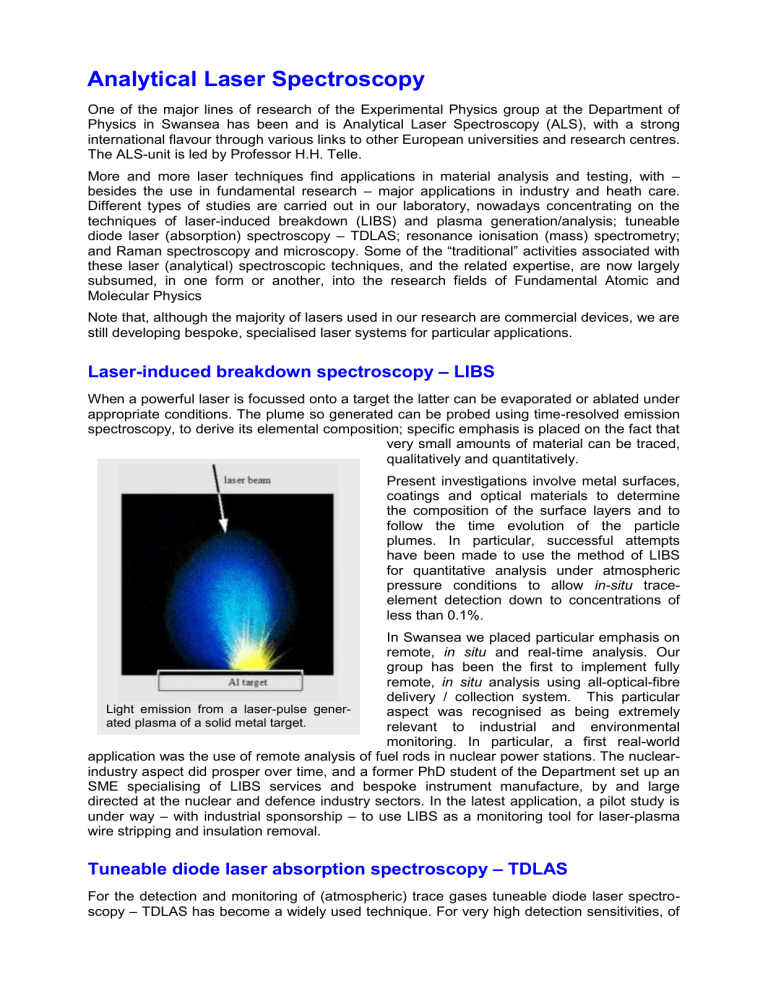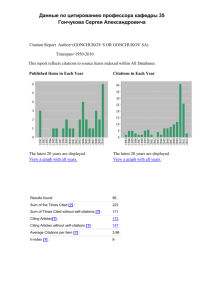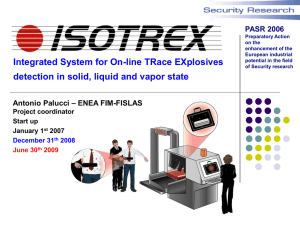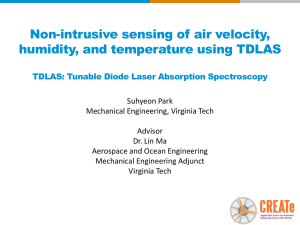Main achievements the Experimental Group, Laser Physics section

Analytical Laser Spectroscopy
One of the major lines of research of the Experimental Physics group at the Department of
Physics in Swansea has been and is Analytical Laser Spectroscopy (ALS), with a strong international flavour through various links to other European universities and research centres.
The ALS-unit is led by Professor H.H. Telle.
More and more laser techniques find applications in material analysis and testing, with – besides the use in fundamental research – major applications in industry and heath care.
Different types of studies are carried out in our laboratory, nowadays concentrating on the techniques of laser-induced breakdown (LIBS) and plasma generation/analysis; tuneable diode laser (absorption) spectroscopy – TDLAS; resonance ionisation (mass) spectrometry; and Raman spectroscopy and microscopy. Some of the “traditional” activities associated with these laser (analytical) spectroscopic techniques, and the related expertise, are now largely subsumed, in one form or another, into the research fields of Fundamental Atomic and
Molecular Physics
Note that, although the majority of lasers used in our research are commercial devices, we are still developing bespoke, specialised laser systems for particular applications.
Laser-induced breakdown spectroscopy – LIBS
When a powerful laser is focussed onto a target the latter can be evaporated or ablated under appropriate conditions. The plume so generated can be probed using time-resolved emission spectroscopy, to derive its elemental composition; specific emphasis is placed on the fact that very small amounts of material can be traced, qualitatively and quantitatively.
Present investigations involve metal surfaces, coatings and optical materials to determine the composition of the surface layers and to follow the time evolution of the particle plumes. In particular, successful attempts have been made to use the method of LIBS for quantitative analysis under atmospheric pressure conditions to allow in-situ traceelement detection down to concentrations of less than 0.1%. ated plasma of a solid metal target.
Light emission from a laser-pulse gener-
In Swansea we placed particular emphasis on remote, in situ and real-time analysis. Our group has been the first to implement fully remote, in situ analysis using all-optical-fibre delivery / collection system. This particular aspect was recognised as being extremely relevant to industrial and environmental monitoring. In particular, a first real-world application was the use of remote analysis of fuel rods in nuclear power stations. The nuclearindustry aspect did prosper over time, and a former PhD student of the Department set up an
SME specialising of LIBS services and bespoke instrument manufacture, by and large directed at the nuclear and defence industry sectors. In the latest application, a pilot study is under way – with industrial sponsorship – to use LIBS as a monitoring tool for laser-plasma wire stripping and insulation removal.
Tuneable diode laser absorption spectroscopy – TDLAS
For the detection and monitoring of (atmospheric) trace gases tuneable diode laser spectroscopy
– TDLAS has become a widely used technique. For very high detection sensitivities, of
the order of sub-part-per-million (ppm), multi-pass arrangement with modulated diode laser excitation and balanced-detector configurations have become the norm. In collaboration with
AWE Aldermaston a range of portable
TDLAS systems was developed and commissioned
All TDLAS experiments were carried out using external-cavity laser diodes, namely at wavelengths in the blue, red and near-IR.
A “standard” TDLAS set-ups were used in which the multi-pass within the cell was realised with as minimal spatial overlap between the passes as possible, to avoid saturation effects for molecules at higher
TDLAS system with multi-pass flowing gas cell and balanced-detector monitoring.
abundance. The collimated laser beam was split up into a probe beam (passing through the absorption cell) and a reference beam.
Laser beams were introduced to the cell via single mode optical fibre (to realize a good
Gaussian beam profile), and to the doublebalanced detector via a multi-mode fibre. Conceptually, the instruments are portable, allowing measurements to be made at various locations.
With these systems, trace gases (such as NO
2
, NO, N
2
O, CO
2
, CO, H
2
CO, NH
3
, CH
3
, and
H
2
O) have been quantified to the level of ppm sensitivity. Specifically, many of the aforementioned molecules are secondary products in the decomposition of polymers, adhesives, and explosive formulations and their ingredients. The latter was of interest to AWE
Aldermaston who sponsored part of the TDLAS work.
Resonance ionisation (mass) spectrometry – RIS/RIMS
In the techniques of RIS and RIMS one does not rely on the detection of photons, as in numerous laser spectroscopic methods, but on the detection of charged particles (ions).
Usually the detection of ions is much more sensitive than that of photons. The specific element under investigation in a sample is selectively (resonantly) ionised, usually in a multi-step laser excitation process. The laser excitation is Z-selective, and the inclusion of a mass spectrometer in the experimental set-up adds A-selectivity; as a consequence not only is it possible to discriminate against non-resonant multi-photon ionisation (MPI) products but even isotope-specific detection becomes feasible.
In our laboratory, the technique of RIMS was mainly being applied to microscopic trace element analysis and macroscopic element enrichment. Applications included (multi) trace-element analysis of high-purity materials or of organic matrix materials, and in vitro analysis of medical and biological samples, with spatial resolution (lateral resolution 10-100
m; depth profiling to nearly mono-layer).
Complementing these practical applications we now use RIS in the investigation of fundamental atomic and molecular processes. For example, recently two-step RIS methodologies were used to probe the energy levels of positronium (Ps) at very low concentrations, based on a bespoke, in-house built laser whose line width was matched to the extremely wide Doppler profile of free-moving Ps. And in a collaborative programme with the Universidad Complutense de Madrid we probed and quantified negative molecular ions, at low concentrations in molecular beams, using mass-selective detection in resonant photo-depletion schemes.
Raman spectroscopy
The technique of Raman spectroscopy is used to analyse molecular features and composition of gaseous, liquid and solid materials. We use the technique in
Raman spectroscopy of gaseous samples
Our Swansea Experimental Physics group is part of a large multi-national collaboration called
KATRIN – the KA rlsruhe TRI tium N eutrino mass experiment (for details see http://www.katrin.kit.edu
), which aims to make an absolute mass determination, or set a stringent upper limit on the neutrino mass, by making a precise measurement of the beta-decay spectrum of tritium near its endpoint (around 18.6 keV). Essentially, a very large electron spectrometer (with an analysing plane close to 10 m in diameter) has been designed and is currently nearing completion at the Karlsruhe Institute of Technology (KIT) in Germany. This experiment aims to measure the neutrino mass with a sensitivity of m
ν
= 200 meV/c 2 (90% confidence limit), which is a factor of ten better performance than achieved in the earlier studies. The systematic uncertainty of this measurement is influenced by several parameters.
Particularly important is the precise knowledge of the purity of the tritium, which is used in the gaseous beta-electron source.
Swansea had the responsibility to develop a laser Raman system to continuously monitor the purity of the tritium gas as it is cycled around the apparatus.
Transport of the KATRIN main spectrometer through Leopoldshafen.
While one strives for the highest possible tritium purity, due to the way it is produced the gas is always composed of a mixture of
T
2
(>90%), DT (<10%) and traces of HT, D
2
,
HD and H
2
. In a first instance, the gas composition of the gaseous beta-electron source influences the activity and thus the count rate in the beta-spectrum. In this case, only relative changes are of interest. The composition of the gas has to be monitored continuously in time intervals of less than 250 s and with a measurement precision of at least 0.1%. In the latest experimental setup configuration this is now exceeded significantly, reaching the aforementioned precision within less than 60 seconds, with a trueness of the relative composition of the six hydrogen isotopologues of better than 3%.
Raman spectrum of a mixture of hydrogen isotopologues, with H
2
as the dominant constituent.
The spectral sensitivity and resolution is sufficient to reveal the Q
1
-branches (normally used in quantitative measurements) of all isotopologues. In addition, the spectra reveal other features, including the much weaker
S
1
- and O
1
-branches, and contributions from trace gases other than hydrogen. Trace gases found during long-term circulation of tritiated gas mixtures were minute amounts of atmospheric gases, which had leaked into the circulation system, operating at below atmospheric pressure, and stemming from radiochemical reactions generating tritiated hydrocarbon molecules. Besides its use in the KATRIN experiment we use the methodology in the measurement of atmospheric trace gases and in the near real-time measurements of gaseous exchange reactions. Recent improvements to the sensitivity, using enhancement techniques like long hollow metal-lined capillaries or resonant enhancement cavities allow for detecting sub-mbar concentrations in less than 1s, opening the door for process control applications (such as in the tritium fuel cycle for fusion reactors).
Raman microscopy of biomedical samples
In 2009 the Swansea’s Centre for Nano Health (CNH) commenced operation. It is a £21M project funded by the European Regional Development Fund through the Welsh European
Funding Office, Swansea University, NHS Trust, WAG Health Department and Industry. The key concept of the centre is the overlap between academia, industrial and commercial partners and the NHS.
From its outset the Experimental Physics group of the Department, and in particular its
Analytical Spectroscopy and Nanoscale
Physics branches were instrumental to the development of studies of biomedical cell materials. Ongoing projects include specifically Raman spectroscopy and imaging aiming at rapid diagnostics of bacterial infections; and developing methodologies towards single-cell spectroscopy using tip-enhanced
Raman spectroscopy (TERS).
Bacterial infections in hospital environments constitute a problem of urgency, in need of speedy diagnostics. Of the modern laserspectroscopic techniques Raman spectro-
S. Epidermidis bacteria colonies grown on agar petri dishes and prepared for Raman analysis. scopy is a promising tool to quickly identify different types of bacteria, as we have recently demonstrated. The goal of this research is to significantly reduce the time required to cultivate samples for sufficient concentrations of bacteria to allow laser analysis; and to enable distinction of bacterial strains and clones. We endeavour to generate suitable data bases for bacterial strains and to develop the method towards a novel diagnostic application of high sensitivity and high speed.
To date we have investigated predominantly members of the Staphylococcus epidermidis and Escherichia coli bacteria. The aim has been to develop procedures that allow one to use the same sample preparation as is common for other diagnostic techniques used in hospitals for the initial diagnosis of infection types but at the same time reduce the time for the reliable and reproducible identification of strains and clones.
Principal component analysis (PCA) analysis of repeat Raman measurements for different bacterial species.
In addition to the identification and typing of bacterial strains and clones investigations are under way (i) to monitor fatty acids (and other key molecular compounds) in order to gain new information about the role of the bacterial membranes, to elucidate biofilm formation, adhesion and evolution in different environments; and (ii) to trace the influence of antibiotics onto bacteria and specifically to follow the temporal evolution of treatment effects. Clinical pilot studies are currently under way.








